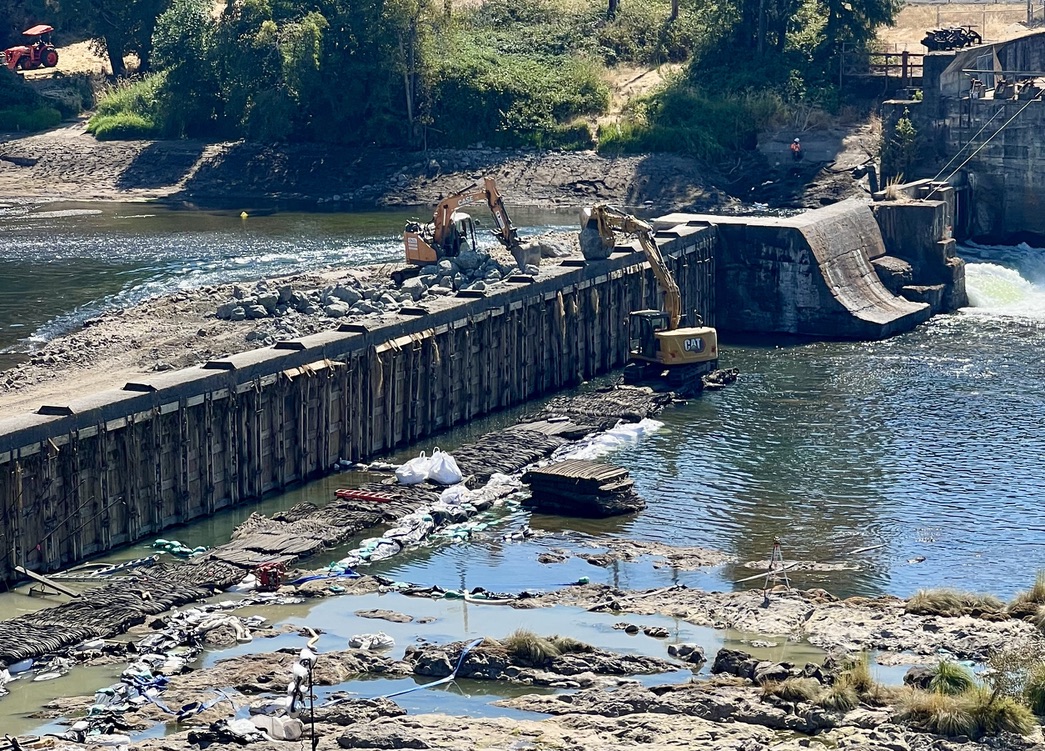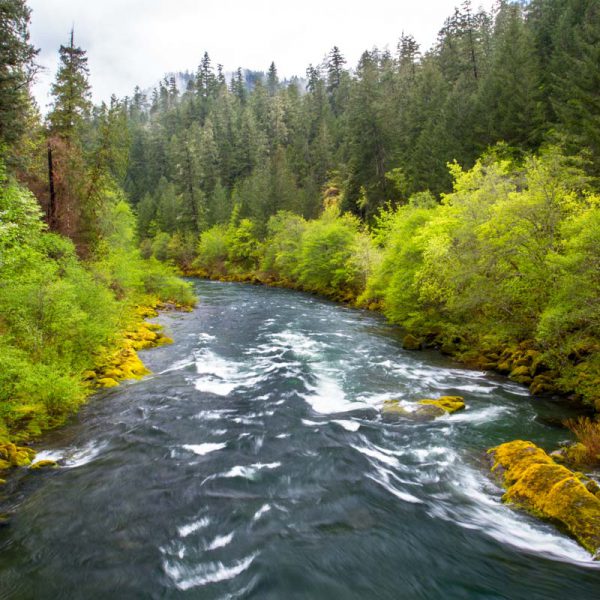Send a letter and/or call your elected officials in the state of Oregon asking them to investigate these reported violations fully and, if substantiated, bring enforcement action to the fullest extent possible. Please encourage your elected leaders to support the removal of Winchester Dam to restore a free-flowing North Umpqua River.
On August 7, 2023, Winchester Water Control District (WWCD) started repairing the derelict Winchester Dam. Despite far more expansive recent claims about these repairs made to the public by WWCD, WWCD representatives previously told state and federal regulators that the repairs would be “to the minimum extent necessary to eliminate known and reasonably anticipated dam safety deficiencies at the dam.” (DOWL Technical Memo, April 4, 2022, p. 4). On this basis, WWCD received approvals from the Oregon Department of Fish and Wildlife, Oregon Department of Environmental Quality, NOAA Fisheries, and U.S. Army Corps of Engineers to proceed with the repairs. State and federal agencies issued the permits even after river advocates repeatedly raised concerns and pointed out multiple irregularities in the process (read about these irregularities and concerns here).
WWCD has hired the residential/commercial basement repair company of their own board president, Terra Firma Foundation Systems, as the primary dam repair contractor, despite the fact that his company has no experience in dam repair.
Since the start of construction, river advocates have documented and reported multiple apparent legal and permitting violations to regulatory agencies. These include a massive fish kill of native Pacific lamprey resulting from woefully inadequate salvage efforts by WWCD during the dam reservoir drawdown. River advocates believe that WWCD’s contractor continues to violate regulations and permits intended to protect fish, wildlife, and water quality.
River advocates have been pressing this issue in part because harm from the previous Winchester Dam repair was devastating and well-documented. According to state investigators, pollution from the 2018 repairs at the dam degraded aquatic habitat, killed fish, and harmed the primary drinking water source for the City of Roseburg and the Umpqua Basin Water Association – serving approximately 37,700 people combined. Investigators also found that dam repairs were conducted without following known best management practices, even after authorities provided WWCD with information in advance on how to protect water quality and fish.
This ecological disaster is happening now because government agencies have consistently failed to hold WWCD accountable. Please take action by sending a letter to your state and federal representatives asking them to fully investigate these reported violations, and if substantiated, bring enforcement action to the fullest extent possible. Together, we can end the ongoing harm from Winchester Dam once and for all. Please encourage your elected leaders to support removal of Winchester Dam to restore a free-flowing North Umpqua River benefiting the fish, wildlife, and people who depend on it!
Sample letter:
Dear XXX
I am contacting you today regarding Winchester Dam on the North Umpqua River and the construction repairs underway. I am disappointed with our state and federal agencies for showing such little concern for the fish, river, and communities of the North Umpqua by approving a repair plan with a documented history of devastating impacts to fish, habitat, and water quality when they had the authority to require a repair plan more protective of our natural resources.
On August 7, 2023, Winchester Water Control District (WWCD) started repairs on the 130-year-old Winchester Dam. Regulating agencies have since received multiple complaints regarding the repairs, including:
Oregon Department of Environmental Quality (ODEQ)
- Operating heavy machinery in flowing water without containment. In addition, some heavy equipment may not be using lubricants approved for in-water work.
- Release of uncured concrete into the North Umpqua River.
- Placement of boulder fill into the few shallow plunge pools available to salmon and steelhead at the base of the dam.
- Use of large mats made from old vehicle tires as a temporary road and work surface for heavy equipment in flowing water and on dewatered river bed. These mats, and the dust and debris generated by driving heavy equipment over them, may contain and shed toxic tire additive 6PPD-q, known to be lethal to salmon and steelhead.
Department of State Lands (DSL) and U.S. Army Corps of Engineers (USACE)
- Construction of permanent concrete support footers in the river bed for a temporary bridge and access road from the north bank of the North Umpqua River downstream of the dam.This road and bridge were not disclosed in WWCD permit applications.
- Placement of boulder fill into the few shallow plunge pools available to salmon and steelhead at the base of the dam.
Oregon Water Resources Department (OWRD)
- Winchester Dam is storing more water than allowed under WWCD’s filed water storage claim. OWRD issued a letter to WWCD in January directing them to either lower their reservoir pool 1.5 feet or apply for a new water right to come into compliance. WWCD has disregarded OWRD’s direction. As a result, when the dam reservoir is refilled to the top at the end of repairs, WWCD will unlawfully injure instream water rights intended to protect salmon and steelhead in the North Umpqua River.
Oregon Department of Fish and Wildlife (ODFW)
- ODFW inexplicably granted WWCD permission to kill 30,000 Pacific lamprey during the repairs. However, the repair contractor’s woefully inadequate staffing of their required fish salvage effort contributed to a massive Pacific lamprey kill in the dam’s reservoir pool, despite a later emergency salvage effort by state, federal, and tribal agencies alerted to the kill by river advocates on the scene.
NOAA Fisheries
- Winchester Dam lies within designated critical habitat for ESA-listed Coho salmon, and adult Coho typically begin arriving at the dam in late summer. NOAA must fully investigate if these repairs have harmed Coho or their designated habitat.
As my elected representative, please ensure that state and federal agencies fully investigate the reports of violations at Winchester Dam, and if substantiated, bring enforcement measures to the fullest extent possible. Please publicly support removing Winchester Dam and restoring fish, wildlife, and clean water in the North Umpqua River. Removing this dam will support commercial fishing, recreational fishing, clean water, public access to state waters, and increase the region’s resiliency in the face of climate change.
Thank you for your time and consideration in this matter.
Sincerely,
John Smith


